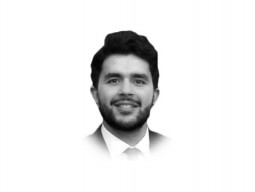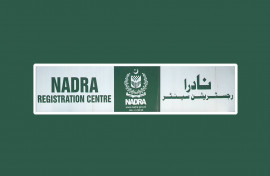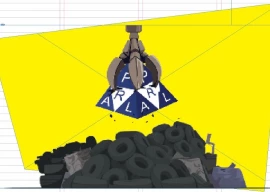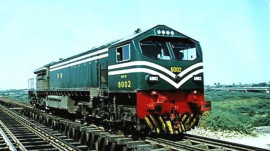
The evidence of educated boys from the middle class randomly joining militancy is not a new phenomenon. It has happened before. For instance, the mastermind of the Parade Lane attack of 2009 was a student at the International Islamic University. One of the key people of the Lashkar-e-Taiba (LeT) in Islamabad is a student at the National Defense University. In 2012, an NED engineering graduate and leader of the Islami Jamiat-e-Tulaba (IJT) was killed in a drone attack in North Waziristan. During Pervez Musharraf’s rule, a federal secretary’s son had also gone for jihad. Not to forget the two nuclear scientists who went to Afghanistan to meet Osama bin Laden.
One particular analysis suggested these educated boys denoted a new trend since they were not connected with any militant organisation but were driven towards terror for ideological reasons. The writer probably forgot that Omar Sheikh was connected with both al Qaeda and the Jaish-e-Mohammad (JeM). The son of a PAF air marshal, Faisal Shahzad also had links with militant groups. In case we forget, David Headley worked for and trained with the LeT in order to do his bit in the Mumbai attacks. Despite that, one particular opinion piece tried to suggest that the new educated terrorists were courtesy the Jundullah. The fact is that our urban centres, especially Karachi, have no dearth of jihadi propaganda and inspiration. Not too long ago, civil society activists remembering Salmaan Taseer were attacked by educated Barelvi militant youth.
Various militant organisations, especially those considered state proxies, have deep links in professional colleges and universities in major urban centres. In Karachi in particular, the NED engineering university and the Dow Medical College, for example, were centres of jihadi attention for long. In any case, outfits like the JeM and the LeT progressively shifted their attention away from totally madrassa trained militants to the more educated types. These outfits are more organised and created sophisticated structures. For instance, the LeT has associations of medical doctors, engineers, farmers and even factory workers. Just couple of months ago, French author, Laurant Gayer, speaking at T2F, mentioned the ASWJ’s presence amongst labour unions in Karachi.
Driven by our donor-driven instinct, we would like to believe that radicalism and militancy is all a matter of poverty, illiteracy and poor governance. One particular Islamabad-based think tank even suggested food scarcity as the reason behind terrorism. But the boys we are talking about are well-fed, in fact over-fed. There is a possibility that their fathers or someone influential in the family either subscribed to radical perspectives or even financed jihad done by others. Increasingly, internal terror financing in Pakistan points in the direction of the extended middle class. The trader-merchant (also referred to as the bazaari) and business class in general were historically tied to radicalism. These people always supported right-wing movements, such as the anti-Ahmadi, Nizam-e-Mustafa in 1977 and similar other movements. These people are not illiterate and their younger generation is better educated. This is, in fact, the elite-in-the-making which is latent-radical in their outlook. A closer examination will also show that major madrassas in Karachi, such as Banori Town or Banoria (and many others) do not just have children of poor people but also from the more affluent middle class. Another fact worth remembering is that critical madrassas today have both religious and non-religious education and teach computers, English, science and other subjects which make them attractive to educated people in the country and also to Pakistani expatriates abroad who then send their children to residential madrassas for education.
In our bias against the poor (not poverty), we tend not to notice the mushrooming of a certain kind of English-medium schools in major cities that are nothing but high-class madrassas. They indoctrinate children from the upper-middle class including those of Pakistani expatriates.
Recently, renowned author Hussain Haqqani spoke at the University of Oxford where he talked about the merit and method of turning Pakistan around to become a viable nation. He talked about the necessity of allowing debate, bringing rationality and abandoning our ideological bias. I would love to continue the conversation and ask him how states and societies that turn latent-radical or even radical due to peculiarities of their ideology can turn around? One of the issues at this juncture is that our nationalism and radicalism have begun to collate. There is very little resistance against militant outfits and their leadership as they appear on television, issue statements on social media or give interviews in the print media presenting themselves as defenders of the state and its religious ideology. While our counterterrorism gurus may think of this publicity as mainstreaming jihadi organisations, this is actually opportunity for militants to paint society in their own shape and colour. Militancy, hence, is part of our instinct.
Experts say that the number of radicalised youth with tertiary-level education has increased. This does not necessarily mean that the ratio of better-educated young men actively taking part in jihad will increase. But this is no less of a worry if this category of people begins to sympathise with radicalism or violent extremism in greater numbers as a means to an end. The fact that our education system provides greater publicity of and a stepping-stone towards radicalism is a known fact. Now, with the perceived threat from India’s RAW, the likelihood of the youth turning away from radicalism is even more abysmal.
Published in The Express Tribune, June 4th, 2015.
Like Opinion & Editorial on Facebook, follow @ETOpEd on Twitter to receive all updates on all our daily pieces.






1732012115-0/Untitled-design-(14)1732012115-0-270x192.webp)







COMMENTS
Comments are moderated and generally will be posted if they are on-topic and not abusive.
For more information, please see our Comments FAQ